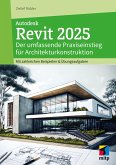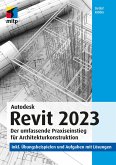Discover how to implement Revit best practices along with Dynamo and Power BI to visualize and analyze BIM information Key Features:Boost productivity in Revit and apply multiple workflows to work efficiently on BIM projects Optimize your daily work in Revit to perform more tasks in less time Take a hands-on approach to improving your efficiency with useful explanations, which will step-change your productivity Book Description: Revit software helps architects, BIM coordinators, and BIM managers to create BIM models and analyze data to improve design and construction. Building Information Modeling (BIM) has promoted a transformation in the engineering and construction industries where information is at the core of a methodology that improves productivity, providing several benefits in comparison to the traditional 2D CAD process. This book takes a hands-on approach to implementing this new methodology effectively. Complete with step-by-step explanations of essential concepts and practical examples, this Revit book begins by explaining the principles of productivity in Revit and data management for BIM projects. You'll get to grips with the primary BIM documentation to start a BIM project, including the contract, Exchange Information Requirements (EIR), and BIM Execution Plan (BEP/BXP). Later, you'll create a Revit template, start a Revit project, and explore the core functionalities of Revit to increase productivity. Once you've built the foundation, you'll learn about Revit plugins and use Dynamo for visual programming and Power BI for analyzing BIM information. By the end of this book, you'll have a solid understanding of Revit as construction and design software, how to increase productivity in Revit, and how to apply multiple workflows in your project to manage BIM. What You Will Learn:Explore the primary BIM documentation to start a BIM project Set up a Revit project and apply the correct coordinate system to ensure long-term productivity Improve the efficiency of Revit core functionalities that apply to daily activities Use visual programming with Dynamo to boost productivity and manage data in BIM projects Import data from Revit to Power BI and create project dashboards to analyze data Discover the different Revit plugins for improved productivity, visualization, and analysis Implement best practices for modeling in Revit Who this book is for: This book is for architects, designers, engineers, modelers, BIM coordinators, and BIM managers interested in learning Autodesk Revit best practices. Increasing Autodesk Revit Productivity for BIM Projects will help you to explore the methodology that combines information management and research for quality inputs when working in Revit.
Hinweis: Dieser Artikel kann nur an eine deutsche Lieferadresse ausgeliefert werden.
Hinweis: Dieser Artikel kann nur an eine deutsche Lieferadresse ausgeliefert werden.








